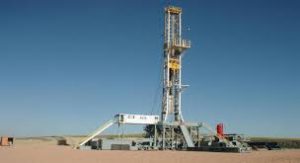 When considering an oil and gas investment, the most important aspect is to evaluate it cognitively. Knowing which questions to ask, and understanding the answers and their implications is fundamental. Begin by asking yourself:
When considering an oil and gas investment, the most important aspect is to evaluate it cognitively. Knowing which questions to ask, and understanding the answers and their implications is fundamental. Begin by asking yourself:
- How long has the company been in business? What is their track record?
- Is the company a licensed oil and gas operator with the Texas Railroad Commission?
- How are company projects selected?
- Who evaluates the geology of the projects; are they reputable?
- Who operates the wells and what kind of experience do they have?
- What is the anticipated cost to drill and complete the well?
- Who gets what percent of the revenue over the projected life of the well?
- Does the company provide timely information and disbursements?
Evaluating Oil & Gas Projects
Drilling for oil and gas is a complex business, that can be further complicated by unscrupulous players. Due to the inherent risk associated with oil and gas investments, the U.S. Securities and Exchange Commission (SEC) has defined certain suitability standards, which help investors determine whether they are an appropriate candidate for this type of investment.
When it comes to investing in oil and gas, it’s important to understand that oil and gas investments are not a one-shot deal, hence: “spread the risk”. You may have to participate in several projects in order to obtain a paying interest in a well. There are three key areas to consider when evaluating a project: the People, the Structure and the Production Projections.
Project Structure | Interest and Cost
Most private placement oil and gas drilling projects have several parties involved when it comes time to sharing revenues from a producing well, including: the land or mineral owner, the project manager, and the investor group, which is financing the cost of drilling, completing and producing the well.
The mineral owner receives a royalty interest of 12.5% to 30% of the total production revenue of a producing well without paying any costs. The remainder of the revenue interest is divided up between the project manager and the invests. When the deal is structured with a royalty interest greater than 30%, someone has carved out an overriding royalty interest that is exorbitant. This cuts into the investor’s rightful revenue interest. Therefore, it usually doesn’t make good investment sense to get involved in an deal where the royalty interest is greater than 30%.
On the cost side, we are looking at the cost of generating the prospect, buying the lease, and drilling and completing the well. Some deals are structured in a manner that the project manager can come back to the investors with additional investment demands in the event of unexpected additional drilling and/or well completion costs. For the investor, I am wary of this type of deal because the investor’s risk is not certain or capped. When a deal is capped or turnkeyed, the prudent project manager should add a reasonable allowance to the drilling and completion budget to cover unexpected expenses. If costs overrun this additional padding, the project manager is responsible for any overruns. If the well drilling and completion costs come in below budget, the project manager will keep the difference. At first, this may seem unfair, but in this way the padding acts like an insurance policy paid for by the investor group. The investor has a cap on his liability and the project manager assumes the added risk. The project manager should provide the drilling and completion costs estimate, called an AFE (Authorization for Expenditure), to the investor. A few calls to service companies and the drilling contractor used by the project manager can reveal the extent of the markup.
Projections | Returns on Your Investment
In an established drilling area, the geologist makes the production projections based on the history of nearby wells. The rule of thumb is to see projections that will return your entire investment in 24 months or less. Anything longer usually means the risk is too high. Allowing for the fact that some wells drilled will be non-producing, you want to make certain that the ones that do produce make up for those that do not.
In summary, when investing in oil and gas, it’s essential that you partner with people you trust, that the terms of the project are fair, and the project has a strong likelihood for paying back your investment in short order.